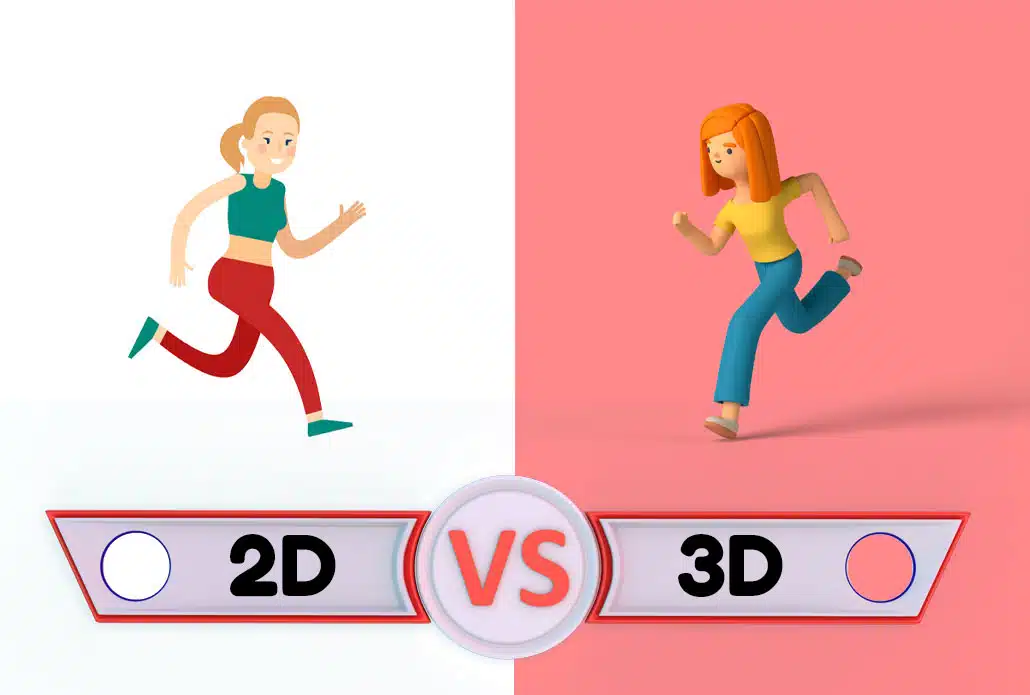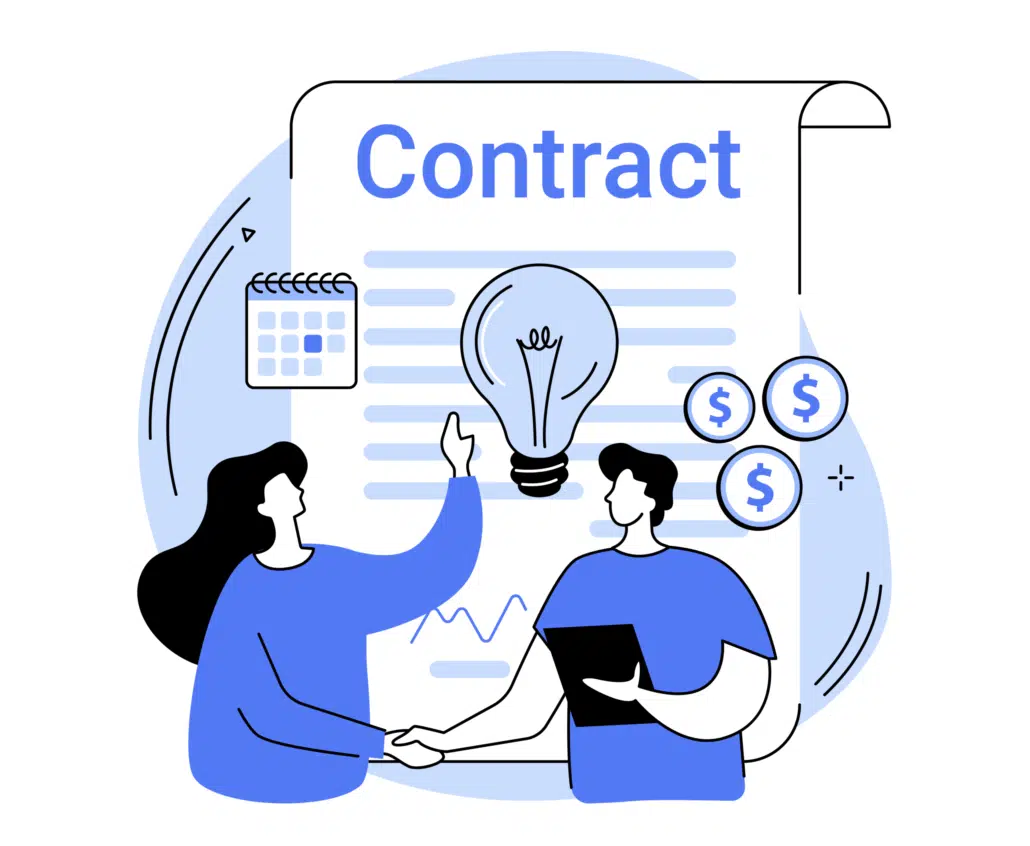How To Pick The Right Visual Style For Your Animated Video
Table of Contents
Computers have broadened the possibilities for different animation styles and techniques that were never possible with hand drawn 2D animated videos. When your imagination is the only limit for the style for your animated video, it can be daunting to figure out the right animated video style for your project. In this article, we’ll present a set of questions to help you think about narrowing down the right style for your animated explainer video. If you have a question about animated video styles that isn’t answered in this article, you can use our contact form to ask your question or click the image below to with a member of our production team:
Questions to ask yourself to figure out which of the different types of animation styles is right for your animated explainer video:
1). Who is your audience? (What does their current design taste look like?)
2). Should I use 2D or 3D animation
3). High end vs cheap?
4). When is the final draft needed by?
5). When should we use hand drawn or ‘frame by frame’ animation?
6). When to use types of non-computer animation (stop motion, paper cut out, whiteboard, screen recordings)
1). Who is your audience? (And what does their design taste look like?)
This article is going to make you think about design in many different ways but the most important factor is knowing who your audience is and understanding their design preferences. If you’re making an animated video to teach kids, then a simple, cartoon animation style is what you’re looking for. On the other hand, if your audience is comprised of C-suite executives who are watching your animated explainer video to see if they want to try your product/service, a more sophisticated animation style or motion graphic would be appropriate.

What kind of animated visual style speaks to your target audience?
Whomever your audience is, spend some time looking at websites, social media pages, and other types of custom animation that your target audience would watch. Find what’s already resonating with that audience and save those examples to share with the designers that are going to work on your animated video. They will be able to take in the examples you share along with your branding and come up with a unique style that fits both criteria.
2). 2D vs 3D Animated Video
In many cases, 2D is the way to go. It’s an infinitely versatile visual storytelling medium. You can get intricate and complicated with the design to make something that stands out, or use a simple animation style without losing your message. 2D videos are quicker and less expensive to produce than 3D animated videos. 2D videos are also easier to make changes to mid-way through production if someone gets a great idea they want to incorporate.  3D animations are the ideal style for your animated video if you want to take a viewer on a journey inside a 3D space to show what an environment is like or to understand the inner workings of a machine or system. 3D animation also works great for your standard explainer video if you want to go for a high impact visual style that stands out from the bunch. Just note that if you want to make a 3D animation, it will take more time and a larger budget to produce than 2D animation.
3D animations are the ideal style for your animated video if you want to take a viewer on a journey inside a 3D space to show what an environment is like or to understand the inner workings of a machine or system. 3D animation also works great for your standard explainer video if you want to go for a high impact visual style that stands out from the bunch. Just note that if you want to make a 3D animation, it will take more time and a larger budget to produce than 2D animation.
3). High end vs cheap? OR Knowing how your budget will affect style
The size of your budget will greatly impact the style, quality and length of your animated explainer video. If you only have a few hundred dollars, your video will likely use a simple animation style consisting of stock images, icons and characters. Budgets of a few thousand dollars can get you a simple or modern looking 2D animation with custom graphics and smooth animations.
For a high end 2D animation (frame by frame animation), you’ll likely want a budget of more than $5,000 per minute of animation in your video. Custom 3D animations usually cost more than $10,000 to create 60 seconds of content. You might be able to find animators that will do this work for less, but expect to pay more than $10k/min if you want good quality custom graphics and animations.
4). What is your deadline?

How much time do you have to get your animated video produced?
How much time do you have to get your video made? Are you weeks away from a product launch and trying to get things done in a short timeline? If so, you’ll want to stick with some form of 2D computer animation or maybe a whiteboard style video. 3D animation and frame by frame animation (or hand drawn animation) generally requires a few months to do all the work. 2D animations are easier to change and modify the style so that they can be produced in a shorter time frame.
Deep Dive: How long does it take to animate a 1 minute video?
5). When to use hand drawn or ‘frame by frame’ animation?
Frame by frame animation (aka hand drawn animation or ‘cel-animation‘) is what most people are familiar with when they think of animation. Think back to the original Disney movies and Looney Tunes cartoons that were created by artists who illustrated each frame by hand. 24 individual images were created per second of video – each with slight adjustments that appear as continuous fluid motion when played as a video.
These days, frame by frame animation is usually done on a computer. Artists will design characters and scenes and then animators will adjust that image slightly for every single frame of the video to make it look like the image is in motion. While technology has made this art form easier and more advanced than it has ever been, it is still a tedious and time consuming process. Frame by frame animation is the way to go for your video if you want to have beautiful fluid motion in your characters, scenes and transitions. The extra time is worth the effort for the visual effect this animation style enables.

6). When to use types of non-computer animation (stop motion, paper cut out, whiteboard, screen recordings)
Stop motion animation, paper-cut out animation, whiteboard animation and screen recordings are all styles of animated videos that you can use for your business – and potentially even create them yourself! While there’s no clear cut answer to when or why you should use one of these different animation styles, they tend to be easier to produce and require a lower budget. If you are making a stop motion video, a paper cut out video, or a whiteboard recording, the only equipment you need is your phone’s camera (and maybe a whiteboard and a pen). Screen recorded videos are best for when you want to show someone how an app or a website works. Sometimes written instructions can be vague, but a screen recording provides unambiguous instructions to viewers about what steps to do next.

Whiteboard animations are a popular low cost visual production style.
7. The Role of Color Psychology in Animation
Color is one of the most powerful tools in animation—it sets the tone, influences emotions, and helps communicate messages effectively. When choosing an animation style, it’s important to consider how color psychology plays into your brand and storytelling.
Bright, saturated colors – Often used in animations targeting children or upbeat, fun brands. Think of brands like Nickelodeon or Lego, where vibrant colors create excitement and energy.
Muted, pastel tones – Popular for minimalist or sophisticated brands. Tech companies and modern wellness brands often use this color palette to evoke a sense of calm and trust.
Dark and moody shades – Great for serious, dramatic storytelling. These colors work well in cinematic animations, gaming trailers, or explainer videos targeting high-end, niche audiences.
If your brand has established color guidelines, ensure that your animation follows them to maintain consistency across all marketing materials.
8. Storytelling and Scripting in Animation

Download Video Igniter’s Free Script Writing Template
Regardless of how visually stunning an animation is, a poorly structured story can make the final video ineffective. Before deciding on an animation style, focus on creating a compelling script.
Clear messaging: Your script should communicate your key message concisely without overwhelming the viewer.
Engaging narrative: Even explainer videos benefit from storytelling elements—introduce the problem, provide a solution, and wrap up with a strong call to action.
Character-driven vs. abstract storytelling: Some videos rely on relatable characters to guide the viewer through a story, while others use abstract visuals and motion graphics to communicate information in a sleek, modern way.
Pro Tip: A well-structured storyboard helps bridge the gap between the script and animation. Creating a storyboard allows you to visualize key moments and ensure that the chosen animation style supports the story effectively.
9. VoiceOver Narration vs. Text-Only Animation

When producing an animated video, you’ll need to decide if you’ll use voiceover narration, text-based messaging, or a combination of both.
Voiceover narration adds personality and emotion, making it easier to connect with the audience. This works well for tutorials, product explainers, and storytelling-driven animations.
Text-based animation (kinetic typography) is a great option if you want a visually engaging video without using a voiceover. This style works well for social media videos, where people may watch without sound.
Combining both methods provides flexibility—allowing the message to be understood even when muted while keeping the narration engaging for those who listen.
When using voiceovers, consider professional voice talent to ensure clarity and credibility. If you’re targeting a global audience, creating different language versions or subtitles will expand accessibility.
10. Accessibility and Inclusivity in Animation

A truly effective animated video is one that can be understood and enjoyed by as many people as possible, including those with disabilities. Here are some ways to ensure accessibility:
Closed captions and subtitles – Essential for people who are deaf or hard of hearing. They also help with engagement, as many people watch videos on mute. Video platforms like YouTube use AI to translate your English subtitles into other languages which expands your video’s ability to connect with non-English speaking audiences.
Color contrast – Ensuring high contrast between background and text elements improves readability for visually impaired audiences.
Audio descriptions – Adding narration that describes key visual elements can help blind or visually impaired viewers understand the content.
Avoiding excessive motion – Fast-moving animations or flashing elements can be overwhelming for neurodivergent viewers or those prone to motion sickness.
Incorporating accessibility into your animation design ensures that your video reaches the widest audience possible.
11. How Different Industries Use Animation

Not all animation styles work for every industry. The right style should align with the subject matter and audience expectations. Here’s how different industries leverage animation:
Healthcare & Medical – 3D animation is often used to create detailed visualizations of human anatomy, medical procedures, and pharmaceutical mechanisms. These medical animations help simplify complex topics for both patients and professionals.
Technology & SaaS – Motion graphics and 2D explainer videos are commonly used to break down complex tech concepts, demonstrate app features, and showcase software user interfaces.
Finance & Fintech – Abstract motion graphics, whiteboard animations, and kinetic typography help explain financial services, investment strategies, and blockchain technology in a visually engaging way.
Education & E-Learning – A mix of 2D character animation and interactive animations is often used to make learning more engaging for students of all ages.
Entertainment & Gaming – 3D character animation, anime-inspired styles, and frame-by-frame animation bring fictional worlds and characters to life in gaming trailers, web series, and feature films.
By analyzing how animation is used in different industries, you can get inspiration for your own project and ensure that the style you choose aligns with your industry’s norms and expectations.
Common Mistakes to Avoid When Choosing an Animation Style

Choosing the wrong animation style can lead to a video that feels out of place, ineffective, or even off-brand. Here are some common mistakes to watch out for:
Ignoring your target audience – A serious corporate audience may not appreciate a cartoonish style, while children might find sleek motion graphics too complex.
Underestimating production time – Choosing a highly detailed animation style without factoring in production time can lead to missed deadlines.
Choosing style over substance – A visually stunning animation won’t be effective if the message isn’t clear or engaging.
Overcomplicating the visuals – Too many intricate details or excessive motion can make it difficult for viewers to follow along.
Not aligning with brand identity – If your company has a minimalist, modern brand aesthetic, a highly detailed and complex 3D animation may feel out of place.
By keeping these common mistakes in mind, you can make a more informed decision and ensure your animated video effectively conveys your message.
Exploring Emerging Animation Trends

Animation is constantly evolving, and staying up to date with trends can help your video feel fresh and innovative.
AI-driven animation – Artificial intelligence tools are automating parts of the animation process, making production faster. AI is especially useful for generating in-between frames, automating lip-syncing, and even assisting with scriptwriting.
Hybrid animation styles – Combining 2D and 3D animation elements creates a unique aesthetic that feels modern and dynamic.
Augmented Reality (AR) & Virtual Reality (VR) animation – As AR and VR technology grows, more brands are using interactive animated experiences to engage users in a more immersive way.
Hand-drawn aesthetics in digital animation – Many brands are opting for a “handmade” feel in digital animations, blending traditional hand drawn animation artistic elements with modern animation tools.
Staying ahead of these trends can help businesses choose animation styles that feel current and engaging.
Deep Dive: Interested in seeing examples of what these different animation styles look like? Check out this article:
Animation Style Guide: Different Types of Animated Explainer Videos.
Choosing the Right Animated Video Style for Different Platforms

The platform where your video will be published plays a significant role in determining the best animated video style to use. Each platform has its own user behavior, formatting, and design expectations:
YouTube – On this platform, longer-form content (1–5 minutes) works well. Explainer videos with a balance of voiceover, character animation, and motion graphics are highly effective here. If your channel is branded, use consistent animation styles to build visual identity.
Instagram & TikTok – Short, punchy videos with fast transitions and high visual impact perform best. Consider using kinetic typography, bold color palettes, and loopable animations that are optimized for vertical video formats.
LinkedIn – Professional audiences on LinkedIn tend to engage with animations that use clean motion graphics, corporate branding, and subdued color schemes. Think modern, informative, and visually polished.
Websites & Landing Pages – Animations embedded on a homepage or product landing page should be lightweight, load quickly, and enhance the user experience without being too distracting. Use subtle looped animations or animated icons to increase engagement.
Email Marketing – While embedding full animations in emails can be tricky, GIF-style animations can improve click-through rates when used sparingly. Choose simple animation styles that loop cleanly and emphasize your CTA.
Understanding how your animated video style aligns with the norms and constraints of different platforms helps you tailor your content for maximum reach and effectiveness.
Interactive Animation vs. Passive Animation

As animation technologies evolve, brands now have the option of creating interactive animated videos, where viewers can click, scroll, or make decisions that affect the content being shown.
Interactive animated video styles are particularly effective for:
- Training and e-learning content
- Onboarding new users to digital platforms
- Product configurators and guided demos
- Gamified experiences and quizzes
These types of animations require a different design mindset. Instead of a linear story, interactive styles involve decision trees, dynamic transitions, and UI-like interfaces.
Passive animations, on the other hand, follow a fixed script and are ideal for storytelling, brand introductions, or explainers. They’re easier and less expensive to produce but may have less viewer retention in educational or demo contexts.
Choosing between interactive vs. passive animation styles depends on your communication goals and user engagement priorities.
How Branding Influences Animated Video Style

Your brand identity should be at the core of every design decision—including your animation style. Animated videos are often one of the first touchpoints a potential customer has with your brand, so it’s crucial to ensure your animation aligns with your brand guidelines.
Key branding elements to consider:
- Typography: Does your brand use modern sans-serif fonts or playful handwritten styles? Match this within the animation.
- Logo Animation: Incorporating a consistent animated version of your logo can help reinforce brand recognition across videos.
- Color Palette: Stick closely to your brand’s color hierarchy and understand how color psychology complements your overall brand personality.
- Illustration Style: Some brands use geometric, flat illustrations while others prefer organic, hand-drawn visuals. Consistency here matters.
If your brand is known for being innovative, minimalist, luxurious, fun, or eco-friendly, your animated video style should reflect that tone visually and emotionally.
Pre-Production Planning Tips for Choosing Your Animation Style

Before jumping into production, follow these pre-production best practices to ensure you choose the most effective animation style for your goals:
1. Develop a creative brief
Clearly outline your project goals, audience, message, tone, and preferred animation styles. This helps align your production team and reduces revisions.
2. Storyboard multiple style options
Visualize key scenes in different styles (2D flat, whiteboard, isometric 3D, etc.). This allows you to evaluate which one fits best with your message and brand.
3. A/B test short animation snippets
If you’re unsure which style will resonate most with your audience, test two different 10-second animation samples on social media and measure engagement.
4. Assess your team or partner studio’s strengths
If you’re hiring a studio or working with freelancers, ask to see their animation reels and see which styles they execute best. Choosing a style they excel in will ensure higher quality results.
Animation Styles in Cross-Cultural and Multilingual Campaigns

If you’re creating animated content for global audiences, be mindful that animation styles don’t translate universally. What feels modern and clean in North America might feel sterile in Latin America or too simple in Asia.
Tips for cross-cultural animation success:
- Use characters and imagery that are culturally neutral or easily localizable.
- Avoid idiomatic expressions in text or voiceover unless you plan to adapt for each language.
- Use symbolic imagery that’s globally recognized (e.g., a lightbulb for ideas, magnifying glass for search).
- Keep your animation style flexible enough for future adaptations.
Creating multilingual versions of the same video may also influence your choice in style—text-heavy animations may need redesigns to accommodate languages like German (longer words) or Arabic (right-to-left scripts).
Budget-Saving Tips Without Compromising Animation Style

Animation can be expensive, but smart planning can help you achieve high-quality visuals even on a modest budget. Here’s how:
- Use pre-built assets: Incorporating elements from animation libraries or stock graphic platforms can speed up production and reduce costs without sacrificing visual quality.
- Limit the number of scenes: Focus on storytelling efficiency—fewer scenes with clever transitions can deliver just as much impact.
- Reuse elements: Backgrounds, character rigs, and motion templates can be reused throughout the video, reducing the need for new designs.
- Batch similar animations: If you’re producing a series of videos, batch tasks like voiceover recording and character rigging to reduce overall costs.
By making budget-conscious decisions, you can still deliver a professional-looking animation that aligns with your style goals.
Licensing, Copyright & Legal Considerations with Animation Styles

Not all animation styles are created equally when it comes to legal and licensing considerations:
- Stock assets: If your animation includes icons, illustrations, or music from a stock platform, ensure you’re using them within the terms of the license (especially for commercial use).
- Third-party templates: Many motion graphics templates for After Effects or similar programs have specific licensing rules. Verify usage terms to avoid legal issues.
- Original character design: If you’re creating branded mascots or characters, make sure you have ownership or exclusive rights to use them in perpetuity.
Discuss legal rights and usage ownership with your animation provider up front, especially if you plan to reuse your video style across multiple platforms and formats.
Animated Video Style Wrap Up

Choosing the right animation style for your project requires careful consideration of your audience, budget, timeline, and branding. Whether you’re looking for a sleek motion graphics explainer, a fun and playful 2D animation, or a high-impact 3D visualization, understanding your goals will help you make the best decision.
If you’re still unsure about which style is best for your project, our team is here to help. Reach out through our contact form or schedule a call with our production team to discuss your animation needs!
Hire Video Igniter to Create Your Animated Video
Video Igniter provides world class animated video production services at prices small businesses can afford.
We can make any kind of 2D or 3D animated product video you can imagine.
Check out our portfolio! +20 reasons companies love hiring us to create product videos.
Animated Video Demo Reel
Animated Video Success Stories & Testimonials
“Video Igniter came to us with a number of creative and engaging ideas and were able to create an exciting, impactful video in a short period of time. And the best part was that it cost much less than other options of similar quality. The video they made is a great marketing tool for us.”
Alex Raymond – Founder, Kapta Systems
“My whole family and everyone on Facebook thinks you are amazing. My whole office is freaking out.”
Patricia Shields – Real Estate Agent
“I am beyond satisfied with my experience with Video Igniter. The first drafts of the work were almost exactly what I had in my head when developing the concept. After that each step along the way was seamless until arriving at a perfect finished product. And all this at a tremendous value. Anyone who has considered creating a marketing video should check out Video Igniter.” Anonymous Customer Feedback

Get in touch to discuss your animated video project
Schedule a call to discuss your animated video project.
Get a quote for your animated video.
Check out our animated video portfolio.
Request access to our newest price sheet.
Create your Video Igniter account, fill out a creative brief, and then we’ll make an animated video for you.
